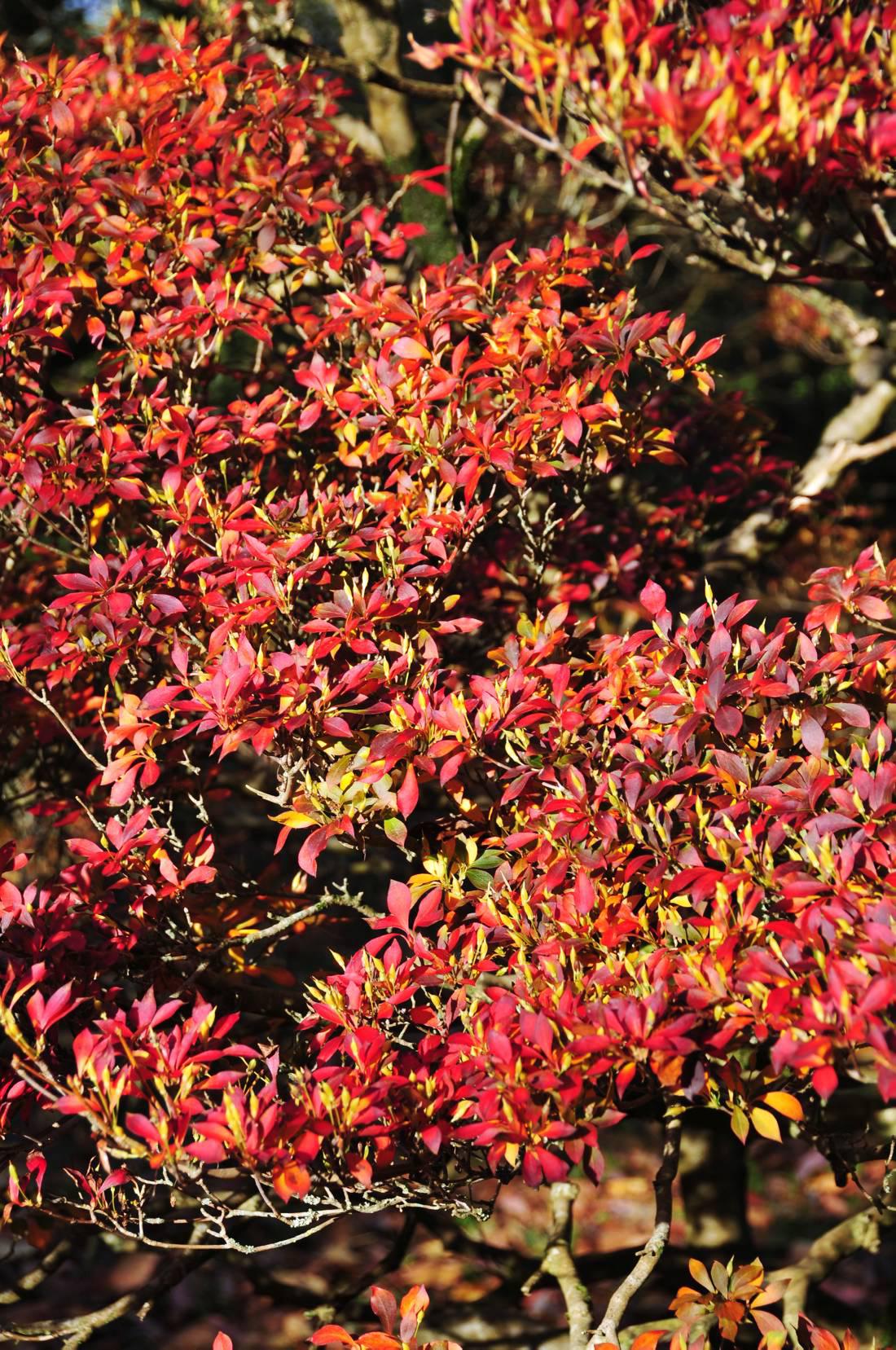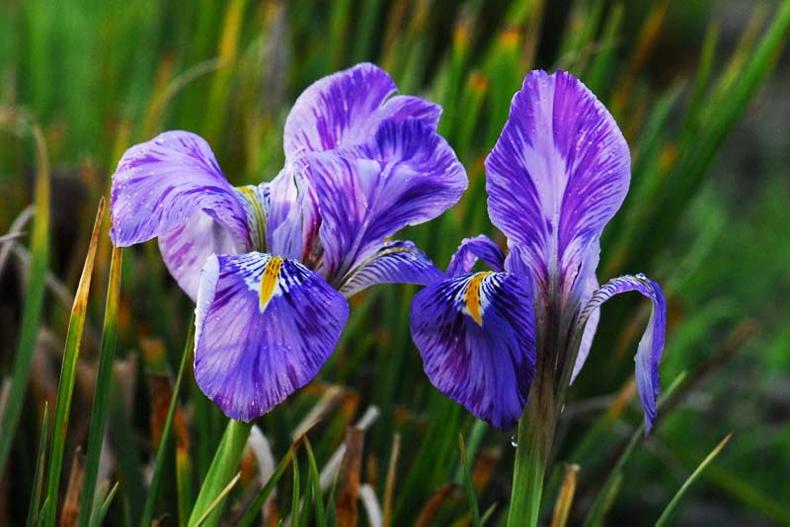It is easy to understand why rhododendrons are so popular as they produce masses of brightly coloured clusters of large flowers. By contrast, the flowers of enkianthus are very low-key and understated. But they too are very beautiful in their own way. The flowers are identifiably part of the heather family, to which both rhododendron and enkianthus belong, perhaps even more heather-like than rhododendron.
The enkianthus flowers are small and bell-shaped, carried on slender, dangling flower stems. Each flower has its own flower stem and these are carried in a cluster.
Sometimes the flower stems are of different length, which has the flowers appearing to cascade down the plant, but sometimes they are the same length, which gives a fringed flower effect.
Either way, the flowering is very pretty and very distinctive. The flower colour is generally a light shade of cream or soft yellow with clearly prominent veining in red, which gives it its common name of redvein.
Although it is a descriptive and easily remembered name, it is not used much, or at all, in this country, being used more widely in America.
This shrub generally goes by its botanical name of enkianthus, the name referring to its obscure flower parts.
The main variety grown here is Enkianthus campanulatus, native to Japan, the second part of the name referring to the bell-shaped flowers. This plant can make a large shrub, up to three metres tall and wide, which is why it suits a country garden very well. At a glance, when in leaf or leafless it looks very like a deciduous azalea in shape and general structure. It grows to full size by sending up upright shoots, which later spread outwards at the top, forming tiers of foliage and flowers.
Flowering takes place in late spring and early summer and lasts for several weeks, although it is usually necessary to approach the plant to see the delightful clusters of bell-like flowers.
There is another kind, Enkianthus cernuus var. rubens, sometimes seen in Ireland, with raspberry-red flowers, still not a beacon of colour, but richer than the main kind. This is a different species, smaller-growing, though harder to find.
Enkinathus is hardy and long-lived. It is an ideal shrub to start off on the edge of a woodland or backed by a hedge more than three metres away.
It likes some shelter, being a woodland and scrub-area shrub in Japan. It should be given good, deep, well-drained soil that does not dry out too much in summer.
Like rhododendron, it likes acidic soil, but it’s not as demanding as most rhododendrons and can cope fine in neutral soil.
On limy soil, it would be necessary to dig in lots of leaf-mould or garden compost to an area of four square metres and to top this up with a mulch of leaf-mould, or similar, each spring or every second year.
While the plant is at its prettiest in early summer with the new soft-green leaves and pale-coloured bells, it is also excellent in late autumn when the leaves turn to shades of red and yellow.
This takes place over a long time and it is often one of the latest shrubs to remain in autumn colour. The leaves create flat sheets over the horizontal, gently tiered branches.
For its various charms, ease of growth and great longevity, this is a shrub worth seeking out for your garden and planting in the coming months.
River lily’s late show
The river lily, schizostylis, is an exceptional garden flower and it has been very good this autumn. It is exceptional in that it flowers so late in the year, often not starting until October, and continues well into December.
It is also exceptional because of its delicacy and gentle pink colour. There are also red forms and these begin to flower in late summer.
There are so few flowers that bloom so late in the year, making schizostylis a plant of great value. It is easy to grow in well-drained soil that does not dry out and it needs full sunshine to make more flowers.
Apart from its great value in the garden, it is also an excellent cut flower for use indoors.
Flowers & containers
Pansies, ornamental cabbages, hardy cyclamen and primroses are ideal for containers. Wallflowers and tulips can be planted in the open ground, as summer bedding is now finished. Perennial flowers can be lifted and divided, though not when the soil is sticky. New perennials can be planted now to fill gaps.
Trees, shrubs and roses
Hedges and areas of garden woodland are much less expensive to establish using small, bare-root plants. But make sure that weed control is excellent. The planting of deciduous trees and shrubs can continue in good conditions, but evergreens, except those in pots, should be left until spring. Plant roses of all kinds.
Fruit, veg and herbs
Tidy the vegetable garden and begin winter digging, burying live weeds and debris, and leaving the soil surface rough. Weedy areas can also be covered with old carpet or similar cover to kill weeds over winter. Fruit trees and bushes can be pruned, except for plum and cherry trees, which are pruned in summer.
Lawns
Leaves should be removed by raking them off, or can be lifted with the lawn mower if they are reasonably dry. If they are wet and sticky, raking is likely to be necessary. Lawn mosskiller, such as sulphate of iron, should be applied if there is a lot of moss, but choose a dry day for best results on weeds as well as moss.
Greenhouse and house plants
Reduce watering to a minimum and stop all feeding, except for winter flowering plants. Ventilate a little if possible and clear out all old dead plants. Move house plants to the best bright spots. Check if they are not standing in a saucer of water as this kills the roots.










SHARING OPTIONS